#but with sword arm
Text
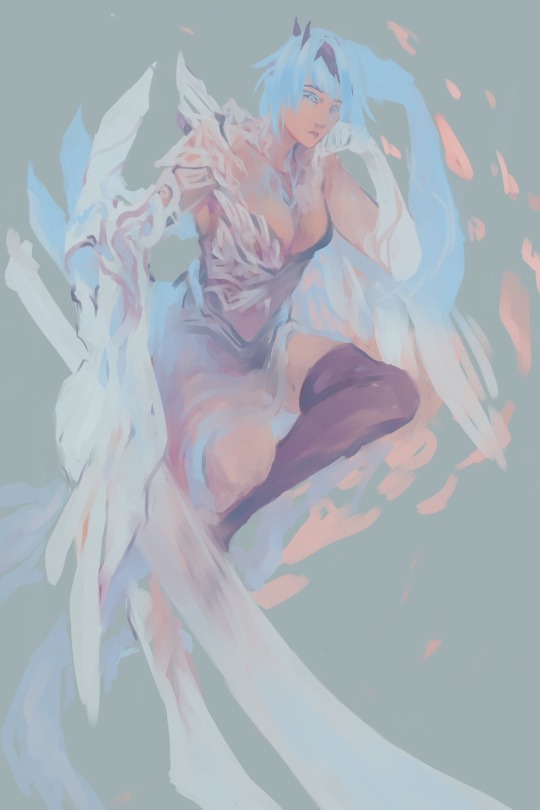
2 notes
·
View notes
Text
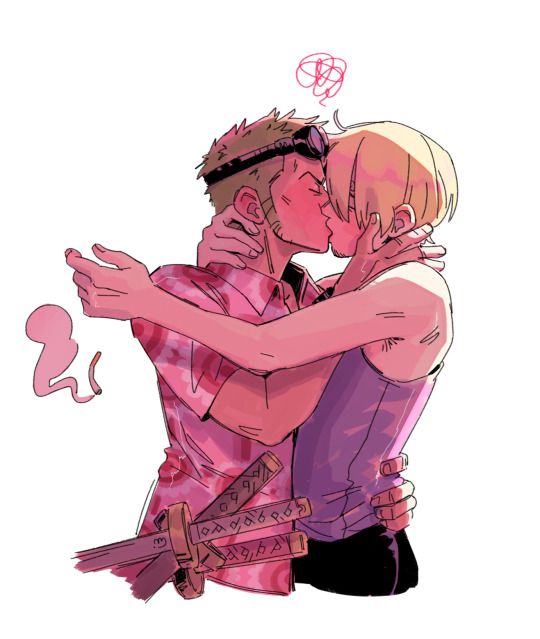
clothes are not the only thing they swap
#watch out for that cig or the whole sky island gonna burn down#my previous pic had so much tension and also a tanktop#so i decided to resolve it#imagine they are 5 sec apart#sth seems wrong with Sanjis arm#but I'm not good enough to see it rn#love attatching zoros swords to his hip by the force of nothing but magic#zosan#zoro#sanji#my art#one piece fanart#one piece#zoro x sanji#rorona zoro#black leg sanji#vinsmoke sanji
7K notes
·
View notes
Text
Here are 543 images (1.5GB) of items at the Philadelphia Museum of Art arms and armor exhibit You're free to use them for anything, even commercially. I tried to focus on details not usually represented in available reference material
Here's a small sampling:




1K notes
·
View notes
Text
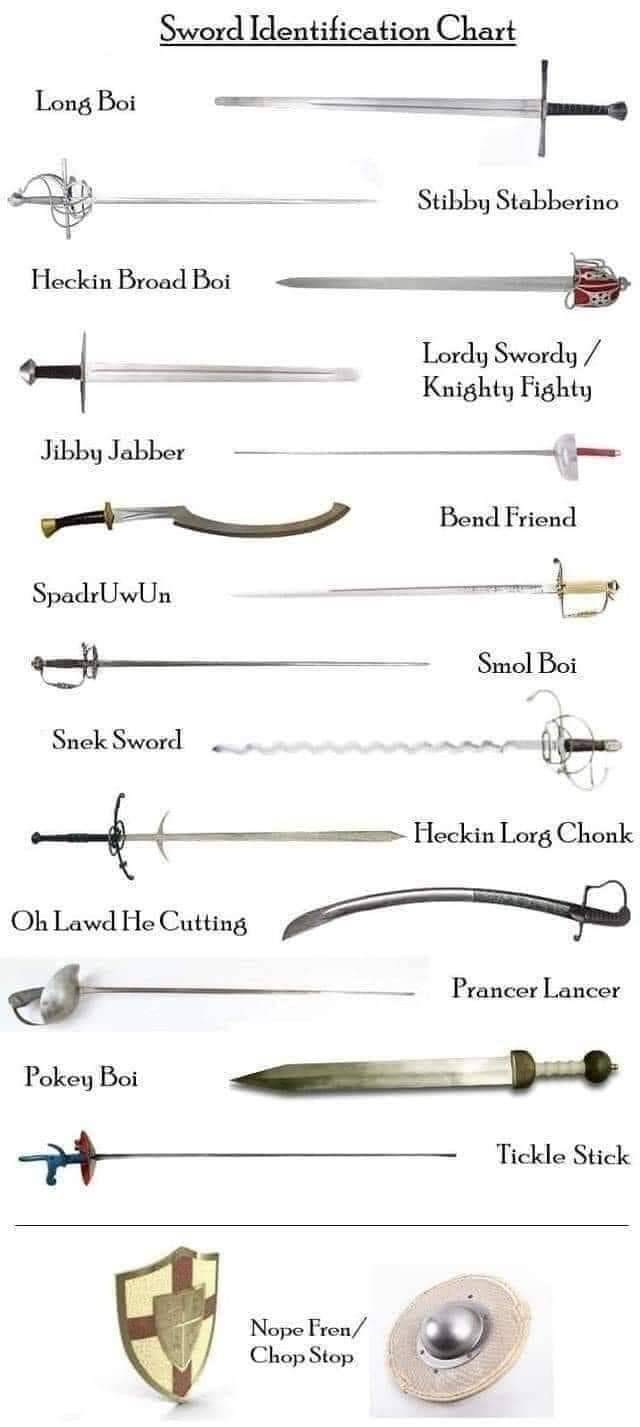
1K notes
·
View notes
Text


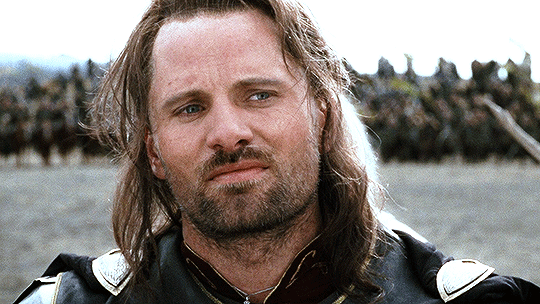

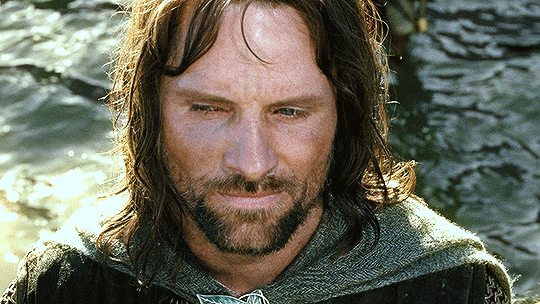
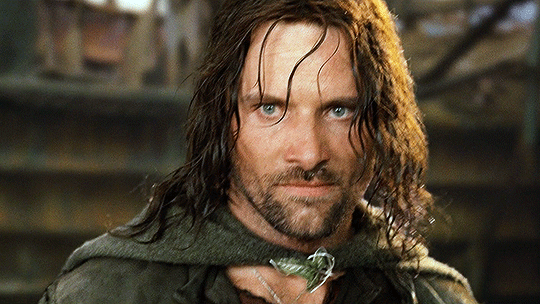

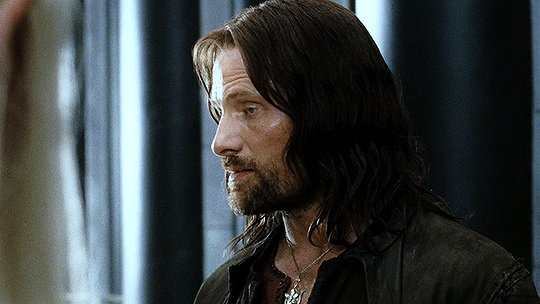


VIGGO MORTENSEN
as Aragorn, in The Lord of the Rings: The Return of the King (2003)
#tolkienedit#filmedit#lotredit#tolkiensource#lotrgifs#userconstance#userlenny#usersugar#filmgifs#moviegifs#adaptationsdaily#viggo mortensen#rotk#lotr#aragorn son of arathorn#*julie from lady bird voice* THE TITULAR ROLE#this is why he's forgiven for doing green book. on thin ice but forgiven.#anyway#the way i was supposed to get my narsil tattoo and ended up breaking my arm on that exact same spot 🤡#but if he can wait to get that silly little sword then so can i i guess
3K notes
·
View notes
Photo
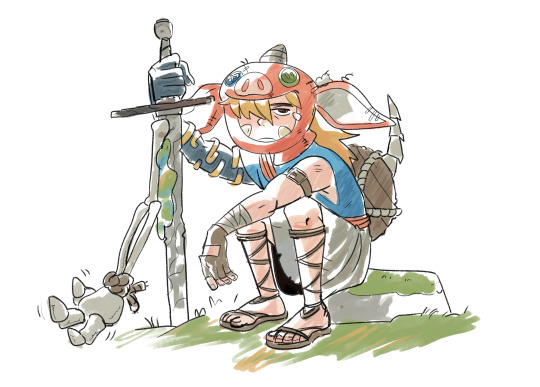
The legendary hero
#my art#the legend of zelda#tears of the kingdom#totk#link#i love that the best sword i've gotten is some guys arm glued to an actual sword
5K notes
·
View notes
Text
Finland any moment now:

#eurovision#esc 2023#käärijä#eurovision song contest#cha cha cha#kaarija#and the lion on the coat of arms will get the bolero as well#the swords will become piña coladas#i love to see it tbh#sori ku tää ei ollu suomeks :(#tarttee vähä koittaa saada suomelle kato ääniä käärijä-propagandalla
4K notes
·
View notes
Text

baby sky doodling today 🪶
#I want to show his gap teeth more#and his arm freckles let’s goooo#I should probably answer some asks today since I have some time#yaaaaaa#the#the legend of zelda#lege#legend of zelda#loz#tloz#skyward sword#as link#link#peachie scribbles
787 notes
·
View notes
Text
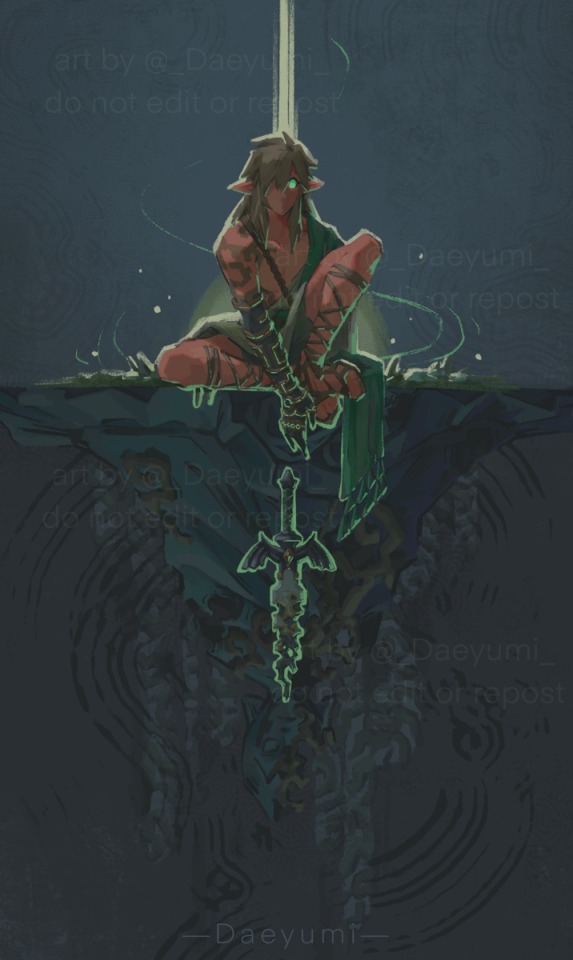
decay 🌑🗡️⚫️
[2022]
#zelda#totk#zelda tears of the kingdom#tears of the kingdom#zelda totk#link#TotK link#legend of zelda#zelda fanart#daeyumi art#i drew this piece last year#around the time we first saw the broken master sword revealed for totk#and idk but i just really love the idea of link as a broken person just like his sword#he’s been beaten up by duty & destiny so much and even after he’s saved everyone there’s still no rest for him#even his own body is foreign to him now; literally belonging to someone else (rauru’s arm)#agh damn i need to draw more art relating to this i just—#im so sorry link i love u so much#😭😭😭
1K notes
·
View notes
Text

#dark aesthetic#dark art#dark#goth aesthetic#darkest academia#darkness#goth#dark academia#medieval history#15th century#middle ages#medieval art#medieval#knight#knighthood#knightcore#dark fantasy#swords#arms and armor
533 notes
·
View notes
Text
thinking about arthur who has crazy quick reflexes and is a relatively light sleeper who woke up to the sound of someone in his room and saw merlin crouched down messing with his keys before softly asking “whatre you doing?…before breakfast?”
#like in that scene in s2 when merlin was calling out arthurs name from under his bed#and he jumped up (thinking merlin was long gone) grabbed his sword and postured for a fight#or that one in idk which season when merlin was sneaking in his room and he woke up and grabbed his sword when merlin bumped a chair#and then merlin brought the canopy/curtains around his bed down on him#vs waking up to see melin splayed over him and staring for a beat#before flinching back#(he was definitely having some thoughts and/or dreams but thats neither here nor there)#idk thinking about arthur who trusts merlin implicitly and allows himself to lower his guard around him#his guard which he keeps up even in his sleep#GOD imagining them in an established relationship and merlin for once has /so/ much trouble waking arthur up#like before it was sorta bad but arthur was always in that half awake state#but now that theyre together….arthur wont even groan when merlin starts poking his ribs#arthur finally feeling so safe and protected that he allows his guard to drop in his sleep#and its the first time hes ever felt truly refreshed in the morning#so now merlin has infinitely more trouble waking him up but when hes up hes UP and ready to go#bbc merlin#merlin emrys#arthur pendragon#merthur#arthur bby they could never make me hate you#hes just a girl desperately craving love and protection#merlin isnt even offering it#hes shoving it into arthurs arms with insults flying off the tongue#theyre so disgusting#(affectionate)#<3#headcanon#head canon#hc
844 notes
·
View notes
Text

#vidow#vio x shadow#shadow x vio#vio link#shadow link#legend of zelda#legend of zelda link#legend of zelda shadow#loz#loz link#loz shadow#four swords +#four swords manga#four swords vio#four swords shadow#four swords adventures#NOT LINKED UNIVERSE#Messenger of the Goddess AU#I forgot the gold decals on Vio's arm-brace#and at this point I just didn't feel like going back to add it#it's there in spirit :)#Vio's bracelet makes a return appearance!#I don't think it was ever clear but he's got the defense+ bracelet#I like to think all the colours collectively decided 'Vio gets it'
426 notes
·
View notes
Text
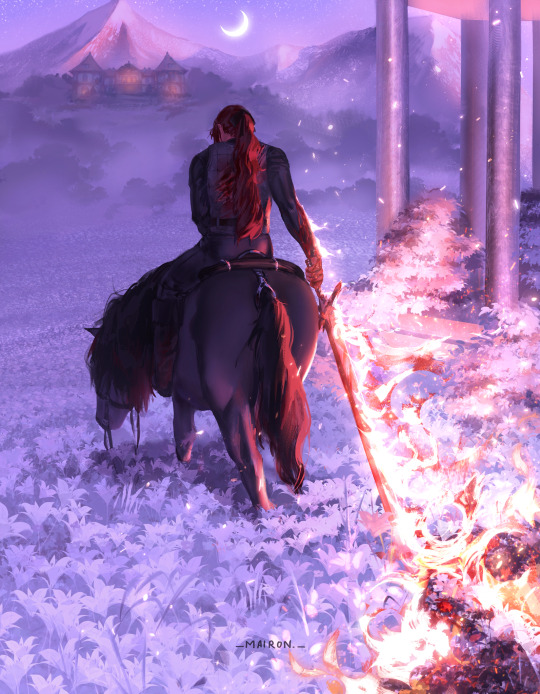
Home was the only place left.
Prints
#something about diluc coming home after 4 years just beyond exhausted everything no longer in his control severely wounded#trodding on his horse through his cecilia garden during the wee hours of the morning. adelinde will surely get a scare. oh well.#bending canon that he had his vision. anyway. wanted to make a piece that had some vague storytelling behind#it for the viewer to come up with their own assumptions#is the blood on his arm his or an enemy’s??? it’s up to you#i started this painting august 18th of 2022 lawllll i hated every moment of it but godbless it’s done#diluc#my art#genshin impact#diluc ragnvindr#diluc fanart#shoutout to my right arm for referencing the awkward angle of holding the sword#nice thing that i’m muscled ❤️❤️❤️
2K notes
·
View notes
Text

Fabian Seacaster, Maximum Legend that you are
#My art#alternate titles include “the only my-own-his-darling-man-boy in the whole world” and “sir tap shoes are NOT a practice piece of casual wea#Anyways I love him. He’s so fun to draw actually he’s so pretty#I tried to keep him looking a bit like Lou with the nose and mouth but I’ve always pictured him with a much softer face? Than he’s usually-#-portrayed? At least in all the official art. Idk I think it’s because he’s a half-elf but it might just be vibes#also I tried giving him arm and chest hair but it looked wrong. He’d probably wax anyway#anyways this is sorta inspired by the cover art of Leon Bridges’ “Gold Diggers Sound” album#Ironically enough I was listening to a Leon Bridges song from a different album the whole time I was drawing it#fabian aramais seacaster#fabian seacaster#fabian seacaster fanart#fantasy high#fantasy high art#d20 fantasy high#dimension 20 fantasy high#fantasy high fanart#fantasy high junior year#fhjr#d20#d20 fanart#d20 fhjy#d20 art#dimension 20#intrepid heroes#lou wilson#I had SO much fun doing the patterns for this as well!!!#The sheet had one originally too but it looked too busy with the shines as well#But for the shirt I used the radial symmetry tool: I included a sword some waves and a music note if you can find them all!#and for the pants I just fiddled with a squiggly line until it lines up so I could repeat it then I just copied the layer flipped back and-#-forth till I got a whole pattern
246 notes
·
View notes
Text





A rare Mediaeval Sword taken from the Mamluk Arsenal at Alexandria during the last Crusade in the second half of the 14th Century
This sword was given as a gift to the Mamluk rulers of Alexandria by the Christian ruler of Cyprus and Jerusalem, King Peter I as part of a gift sealing a treaty. The sword was then forcibly taken back into Christian hands during the last Crusade's victory over the city of Alexandria. Consequently the sword symbolises the history of the time when Christians and Muslims fought for dominance in the eastern Mediterranean.
King Peter I, the King of Cyprus and Jerusalem, launched the last Crusade in 1362 against the Muslim Mamluk Empire in the region. A fleet set out from Cyprus and proved victorious, taking the city of Alexandria with immense amounts of plunder returned to Cyprus, including this sword. Such was the treasure and weapons taken from the captured city that many of the overloaded ships had to jettison cargo.
David Williams, Head of Bonhams Antique Arms and Armour Department, says: "The fascination of this sword is that it has survived some six centuries having been gifted by a Christian King to a Muslim ruler and kept in the famed Alexandrian armoury and then taken by force by Crusaders and returned to Europe. It is a remarkable survivor of the Crusader period."
#antique#arms#medieval#mediaeval#middle ages#sword#swords#alexandria#crusades#crusade#crusaders#crusader#europe#european#knights#knight#cross#christian#christianity#weapon#weapons#armoury#history#christians#armour#arabic inscription#king peter i
494 notes
·
View notes
Note
I have a sword question, if I may. Or more of a sword confusion Im seeking clarification on.
In my mind a fantasy european standard sword (that obviously doesnt really exist, but like, when a knight or someone in a story has an unspecified sword), I always imaged a straight blade with a triangular tip, both edges sharp cutting edges.
Then at some point I learned about eg scimitars that have a cutting edge and a ...blunt edge?
I was looking at your recent addition to the post about the Turkish sword, where you distinguish between an inner cutting edge on a sword v an outer cutting edge.
And then Im thinking of those enormous zweihander types that are all about momentum and do those even need a particularly sharp edge? They seem in dnd parlance to be a bludgeoning weapon not for slashing.
And while Im asking, like. Rapiers are very stabby weapons, do they have sharp edges at all or judt a sharp point?
I guess my overall question culminates something like "what parts of swords are designed for what damage and why? Is there anything all swords have other than blade and handle like can they all be used for stabbing or do some have very blunt points etc? Is it a big deal for a sword to be double-edged, does that necessitate specific training? Whats up with different sword blades?"
I realise thats a pretty enormous question that might be unreasonable to ask. Im happy with whstever response you are or arent willing to give. Hope you have a good day :)
Sharp edge / blunt edge is the setup on any kitchen or table knife you've ever encountered, and being able to put a hand on the blunt "edge" - usually called the back of the blade - not only helps when mincing herbs or garlic, but also features in some techniques of swordplay.
Other techniques employed non-blade parts of the weapon, using the pommel like a mace and the crossguard like a pick-axe.
*****
Whether swords should be straight or curved, single- or double-edged, was an argument which continued as recently as the early 1900s.
The last swords issued to cavalry for combat use (modern parade swords don't count) were both remarkably similar designs, straight-bladed for thrusting, adopted by the UK in 1908...

...and the US in 1913.

There was, of course, strong opposition from those who insisted cavalry swords should be sabres curve-bladed for cutting instead.
Equally of course, both sides failed to notice - or ignored, since a certain kind of cavalry officer was only bright as regards boots, buckles and buttons - the uncomfortable fact that machine-guns and repeating rifles had made the whole ta-ran-ta-rah "cut them down with your swords, men!" cavalry charge an exercise in futility.
*****
D&D, unless they've considerably upped their accuracy game, isn't much of a reference for weapon realism.
"Enormous Zweihanders" and other big swords such as the Montante were a lot lighter and more nimble than they'd seem from reading an encumbrance chart.
They had their own techniques to take best advantage of length, leverage and momentum and were indeed sharp. Given a choice between a sharp combat weapon and a blunt one, sharp makes far more sense.
In addition, a sharp blade is lighter than a blunt one simply through having less metal. It may only be a few grams of difference, but it IS a difference.
That's also the reason behind a fuller, the groove(s) along a blade.


They're not "blood gutters", tough and cool though that may sound, but a way to reduce a sword's weight while preventing its blade from getting excessively flexible.
Finally...
tumblr
The re-enactor is wearing half-armour, but these big swords were also meant for use against unarmoured opponents. Bodyguards often carried them (they looked impressive) and those sweeping strokes could block an entire street while The Boss got away.
That's when an ability to cut rather than merely bludgeon makes all the difference. Determined assassins might try to rush a blunt sword, but a sharp one would give anyone second thoughts...
*****
Double-edged swords versus single-edged ones seem to vary depending on cultural preference - also on period of history and intended function.
Bronze Age European swords had straight or leaf-shaped blades with double edges...

...while Ancient Egypt had the curved, single-edged khopesh, a shape which also turned up in Ancient Assyria (this one's in the Metropolitan Museum, New York USA).

It's listed as a "sickle sword", an incorrect term which I wish would go away because sickles are sharp on the inside of the curve while swords like this - their grip-shape shows how they're meant to be held and swung - are sharp on the outside.
And just when "the Ancient Middle East used curved single-edge swords" looks like a handy generalisation, along come straight swords, one from Ancient Egypt...

...another from Luristan, now part of modern Iran.

This next one comes from Ancient Iberia (Spain), right at the other side of the Mediterranean. Evidence of trading links? Your guess is as good as mine.

Iberia went on to use the falcata, a short single-edged forward-curved sword.

Those extra bits round the blade are scabbard metalwork; the wood and leather scabbard is long gone. This repro shows how they would have looked when in place.
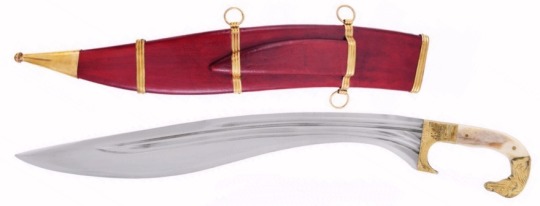
Iberia also used a straight double-edged sword which so impressed the Romans that they adopted it, refined it and used it for several centuries. Here's one of the several Roman versions of that gladius Hispaniensis (Spanish sword), double-edged, mostly meant for stabbing but capable of very effective cuts as well.

Here's my repro of a similar sword, the elegant "Mainz" pattern with its long point and waisted blade. Very pretty, and pretty wicked.

*****
"Curved single-edged swords are Eastern, straight double-edged swords are Western", is another generalisation that won't work.
Here are Eastern straight swords...


...and Western curved ones.

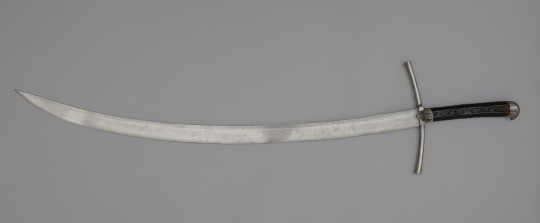
*****
Viking swords were all double-edged...

...except when they weren't.



*****
Many rapiers could cut. Smallswords, which came later, couldn't.
Earlier rapiers with broader blades cut better than later ones with narrow blades, but IIRC even the later Italian and Spanish rapier styles include cuts directed at the opponent's face and sword-arm.
I have a notion that the modern thing about cutting with rapiers is based (like back-carry) on seeing it done in movies. IMO - more about it here - that's actually more a modern stage-combat safety thing than a period real-combat move. A fumbled cut is bruising and unpleasant even with a "safe" prop sword, but a fumbled thrust into the eye-socket or throat with that same "safe" sword can be fatal.
Even those early rapiers wouldn't sever a head or limb - a finger maybe, hence the elaborate hand-protection of swept and cup hilts - but blood from a forehead wound running into the eyes was, and in boxing still is, an efficient way to finish a fight by ensuring the opponent can't continue. One of the duels in "The Duellists" ends this way.
This example is a bit optimistic, IMO...
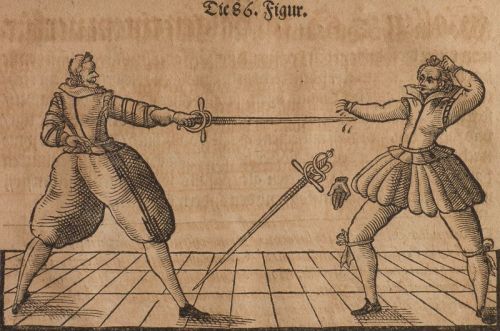
...but a longsword (double-edged)...

...or a messer (single-edged)...
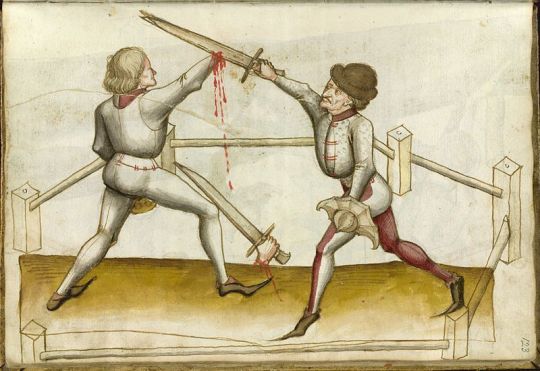
...was quite capable of disarming an opponent in a very literal way.
*****
Some swords had minimal points, being intended mostly for cutting. One example of this is the Indian khanda broadsword. The second example is also very clearly single-edged.


Another cut-only sword without a point (but with double edges) is the Richtschwert (justice sword)...


...though this was a single-function (and hopefully single-cut) tool rather than weapon, neither balanced for nor intended for combat.
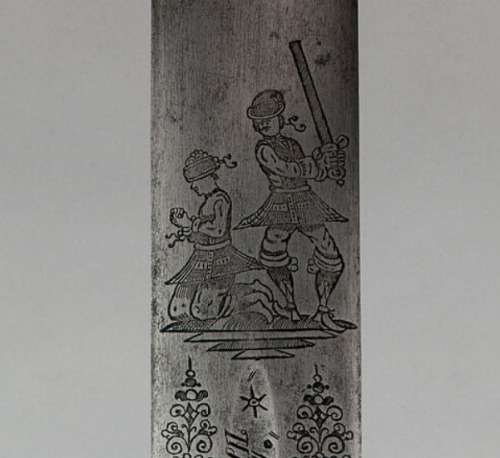
Hope this has helped answer the questions!
355 notes
·
View notes